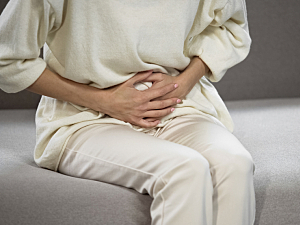Lower urinary tract symptoms (LUTS) are extremely common, reported by a third of women of all ages. LUTS include stress urinary incontinence, urinary urgency and frequency, straining with urination, incomplete bladder emptying, hematuria, dysuria/pain with urination and pain when the bladder is full.
In the first study of its kind, researchers at Brigham and Women’s Hospital found women and adolescents with surgically confirmed endometriosis are at substantially greater risk than others of having multiple LUTS. Iwona Gabriel, MD, PhD, a researcher in the Urogynecology Group in the Department of Obstetrics and Gynecology, Vatche A. Minassian, MD, MPH, chief of the group, and colleagues report the data in Fertility and Sterility.
Methods
The Brigham is partnering with Boston Children’s Hospital on the Women’s Health Study: From Adolescence to Adulthood, an ongoing longitudinal study. Between 2012 and 2018 the hospitals enrolled 1,549 premenopausal females ages 7–55 years old, oversampling for those with a surgical diagnosis of endometriosis.
The sample for this analysis was 1,161 participants—520 with endometriosis and 641 without—who completed a standardized questionnaire at study entry that included questions about LUTS. The participants also rated dysuria and bladder pain on a scale of 0–10. Clinically relevant pain was defined as a rating ≥5.
Results
LUTS were common overall, with 44% of participants reporting at least one symptom. 56% of those with endometriosis reported LUTS versus 34% of those without endometriosis.
In adjusted analyses, the risk of most individual LUTS was significantly greater in participants with endometriosis than those without:
- Pain when the bladder is full—adjusted OR, 6.04 (95% CI, 3.74–9.76)
- Bladder still feels full after urination—4.67 (2.88–7.56)
- Difficulty passing urine—4.31 (2.07–8.95)
- Having to urinate again within minutes of urinating—2.49 (1.81–3.43)
- Dysuria/pain with urination—2.38 (1.40–4.02)
- One or more symptoms vs. none—2.46 (1.86–3.25)
In addition, five times more participants with endometriosis experienced pelvic pain unconnected with the menstrual cycle (65% vs. 13%).
Neither the stage of endometriosis nor the duration of endometriosis-associated symptoms was associated with LUTS.
Clinical Suggestion
Clinicians should address LUTS at the time of initial diagnosis of endometriosis and throughout the course of management.
